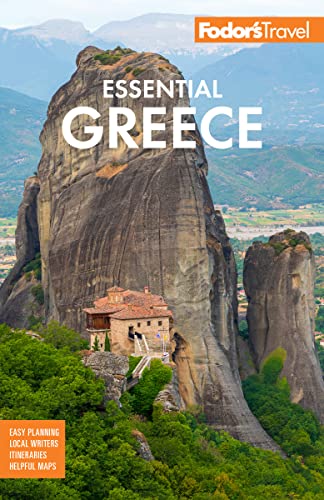One of the most beguiling and untamed sections of Greece is the region of Zagorohoria (pronounced zah-go-ro-hor-ee-ah), also known as Zagori or Zagoria, which comprises 46 villages to the north and northwest of Ioannina. During the last decade, the famously picturesque Zagorohoria region has become popular among Greeks, and is a place mostly visited by foreigners who are "in the know." Its cultured people, stunning landscapes, cozy guesthouses, World Heritage–protected architecture, and sparkling rivers make it a unique and romantic destination.
Here you can see beautifully maintained arhontika (stone mansions with walls and roofs made of gray slate from surrounding mountains), winding cobblestone streets, graceful arched Turkish bridges, churches with painted interiors, kalderimi (old mule trails), and forests of beech, chestnut, and pine. If you have only a day to spare, rent a car or bargain with a taxi driver in Ioannina to transport you to some of the many villages connected by well-paved roads. If you opt to spend the night in one of the villages, you have the chance to truly soak up the local color, get a look at the interiors of some of the Ottoman-style living quarters, and partake of some excellent food. Wonderful hikes are another pleasure for those who choose to stay and explore awhile. Some of the villages, such as Megalo, Mikro Papingo, Monodendri, and Konitsa, are likely to be busy with travelers in July and August, particularly on weekends and major holidays. Book ahead or, better yet, stay in some of the (even) lesser-known villages, some of which have only 10 permanent residents.
Kipi, 40 km (25 miles) north of Ioannina in the central Zagori, is famous for its three-arch packhorse bridge, and the community runs a fascinating folklore museum. Tsepelovo, 5 km (3 miles) northeast of Kipi, is one of the most authentic villages. Perched on the slopes of Mt. Tymphai, at 3,960 feet, it was built using the gray-brown tile-like rock that makes up most of the surroundings. A must-see village, Monodendri, 44 km (27 miles) north of Ioannina, is a well-preserved settlement perched on the rim of a breathtaking gorge on the boundary of the Vikos–Aoos National Park. There's a stunning vista from the abandoned 15th-century monastery, Agia Paraskevi.
Papingo, 59 km (37 miles) north of Ioannina, has delightful architecture—many houses are still topped with the silvery blue slate that used to be so common throughout Epirus—varied scenery, and friendly locals, although it was among the first villages here "discovered" by wealthy Greeks. It’s divided into two towns. Megalo Papingo, aka Big Papingo, is near the Voidomatis River, which has excellent rafting and canoeing. Mikro Papingo, aka Little Papingo, is 1.5 km (1 mile) up the road from Megalo Papingo, below some limestone rocks; it’s really small—the population is fewer than 100—but appealing. Dilofo (31 km [19 miles] from Ioannina), aka Two Hills, is one of the best-preserved, quietest, and most picturesque villages in the region, and among the very few where cars can park at its entrance. Your kids (and you) can run safe and free along its cobblestone footpaths.




